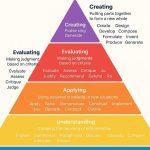
13 students engagement strategies You can Try
- The Importance of Student Engagement
Engaging students in the learning process is very important, especially in diverse learning environments. Students who are actively engaged tend to perform better, retain more information, and feel more connected to the instructional material. With the right strategies, teachers can help students overcome fears, build confidence, and improve their comprehension of the subjects they are studying. This guide outlines effective strategies that educators can use to enhance student engagement in various learning contexts.
Classroom Activities Should Address Student Fears

The classroom can be an intimidating place for many students, as it requires intellectual commitment and active participation. This environment often triggers fear of failure or judgment from both teachers and peers. Addressing these fears is a strategic first step in promoting student engagement.
what are some student engagement strategies
1. Ask Open-Ended Questions
Open-ended questions are an effective way to encourage student participation. These questions don’t have a single correct answer, which reduces the pressure on students who may be afraid of making mistakes. For instance, asking students to justify an opinion or interpret a reading can lead to rich discussions, as students explore different perspectives. This approach also encourages students to engage more deeply with the material, as they need to understand it beyond just knowing the right answer.
To further enhance understanding, you can follow up with fact-based questions after an open-ended discussion. This allows you to refine and clarify the points raised, ensuring that students grasp the essential concepts.q
2. Ask Students What They Know Before Instruction

Before diving into new material, it’s helpful to gauge what your students already know. This can be done through background-knowledge probes, which allow you to tailor your lessons to the students’ current level of understanding. By doing this, you can better engage students during class and even spark immediate discussions.
3. Use Ungraded or Credit-Upon-Completion Assignments
Incorporating ungraded assignments or activities that students can complete for credit can significantly boost engagement. For example, short reflections on class material or participation in discussions can be used as credit-upon-completion tasks. These assignments hold students accountable without the pressure of grades, encouraging them to think critically and engage with the material in a low-risk environment.
Encourage Active Roles in Collaborative Learning
Collaborative learning is a powerful tool for student engagement. When students work together, they can learn from one another and take on more active roles in the learning process. This not only helps them understand the material better but also builds a sense of community in the classroom.
4. Incorporate Student Discussion Time
Instead of having students work on problems individually, consider incorporating group activities like think-pair-share. These activities encourage students to discuss their reasoning and problem-solving processes with peers, which can enhance their understanding and promote metacognition. Group discussions are effective for both open-ended questions and problems with specific solutions.
5. Have Students Teach or Explain to Peers
When students begin to understand a concept, it’s beneficial to have them explain it to their classmates. This not only reinforces their own understanding but also helps other students who might be struggling with the same topic. Encourage these students to take questions from the class, stepping in only when necessary to correct or clarify information.
6. Build Peer Review into Assignments
Peer review can be an excellent way to increase student engagement, but it’s important to set clear expectations and norms to ensure that students feel respected and open to feedback. By explaining the benefits of peer review and giving students guidelines on how to provide constructive criticism, you can create a supportive environment that fosters learning. Additionally, consider how you give feedback on assignments that have gone through peer review, reinforcing the value of peer input.
Provide Diverse Engagement Opportunities in Students engagement strategies
Universal Design for Learning (UDL) is a framework that emphasizes the importance of providing multiple means of engagement to accommodate the diverse needs and preferences of students. By offering a variety of engagement opportunities, you can reach more students and enhance their learning experience.
7. Offer Multiple Versions of Activities or Assignments
To engage students effectively, it’s important to offer them choices in how they engage with the material. For example, you can provide different types of projects or use a variety of sources in your lectures to cater to different learning styles. Giving students the opportunity to choose their preferred method of engagement can lead to a more personalized and effective learning experience.
8. Encourage Reflection on the Learning Process
Metacognition, or thinking about one’s own thinking, is a valuable skill that can enhance student learning and motivation. Encourage students to reflect on their learning process by providing feedback on key assignments and creating opportunities for self-assessment. For instance, you can use tools like the Exit Ticket module from Canvas Commons, which offers various techniques for students to assess their own learning.
9. Emphasize Course Objectives in Assignments
Reinforcing the importance of course objectives in assignments can help students understand the relevance of what they’re learning. Assignments should be designed to connect with students’ backgrounds and interests, making the material more engaging and meaningful. By clearly linking course objectives to real-world applications, you can help students see the value of their learning.
Online Learning and Student Engagement
In the digital age, online learning has become increasingly common. Engaging students in a virtual environment poses unique challenges, but with the right strategies, it is possible to maintain high levels of engagement even online.
10. Strategies for Engaging Students in Virtual Classrooms
Virtual classrooms require different approaches to engagement compared to traditional classrooms. Use interactive tools like polls, discussion boards, and breakout rooms to keep students actively involved. Regular check-ins and feedback can also help maintain engagement and ensure that students are on track.
11. Overcoming Challenges in Online Engagement
One of the biggest challenges in online learning is the lack of face-to-face interaction, which can lead to feelings of isolation among students. To combat this, create opportunities for students to connect with one another, such as through group projects or virtual study sessions. Additionally, make sure to provide clear instructions and expectations, as confusion can quickly lead to disengagement in an online setting.
Assessing Student Engagement
To ensure that your engagement strategies are effective, it’s important to regularly assess student engagement. This can be done through various tools and techniques that provide insights into how well students are engaging with the material.
12. Tools and Techniques for Measuring Engagement
There are several ways to measure student engagement, from simple surveys to more sophisticated analytics tools. For example, you can use student feedback forms to gauge how engaged they feel in class, or analyze participation rates in discussions and assignments. By regularly assessing engagement, you can adjust your strategies as needed to keep students involved.
13. Adapting Strategies Based on Engagement Levels
If you notice that student engagement is low, it’s important to adapt your strategies accordingly. This might involve introducing new activities, changing the format of your lessons, or providing additional support to students who are struggling. By being flexible and responsive to students’ needs, you can maintain high levels of engagement throughout the course.
FAQs on Student Engagement Strategies
What are the most effective strategies for student engagement?
The most effective strategies vary depending on the context, but generally include active learning techniques, collaborative learning, and the use of technology to create interactive and personalized learning experiences.
How can teachers engage students who are disinterested in learning?
Engaging disinterested students can be challenging, but using a variety of strategies, such as incorporating their interests into the material, offering choices in assignments, and providing opportunities for peer interaction, can help.
What role does technology play in student engagement?
Technology can play a significant role in enhancing student engagement by providing interactive tools, enabling personalized learning experiences, and facilitating communication and collaboration.
How can student engagement be improved in large classrooms?
In large classrooms, strategies such as using small group discussions, interactive polling, and breaking the class into smaller sections for certain activities can help improve engagement.
Conclusion: The Future of Student Engagement
As educational environments continue to evolve, so too will the strategies for engaging students. By staying informed about new techniques and being willing to adapt your approach, you can ensure that your students remain actively engaged and motivated to learn. Effective engagement strategies not only improve academic performance but also help students develop a lifelong love of learning.








